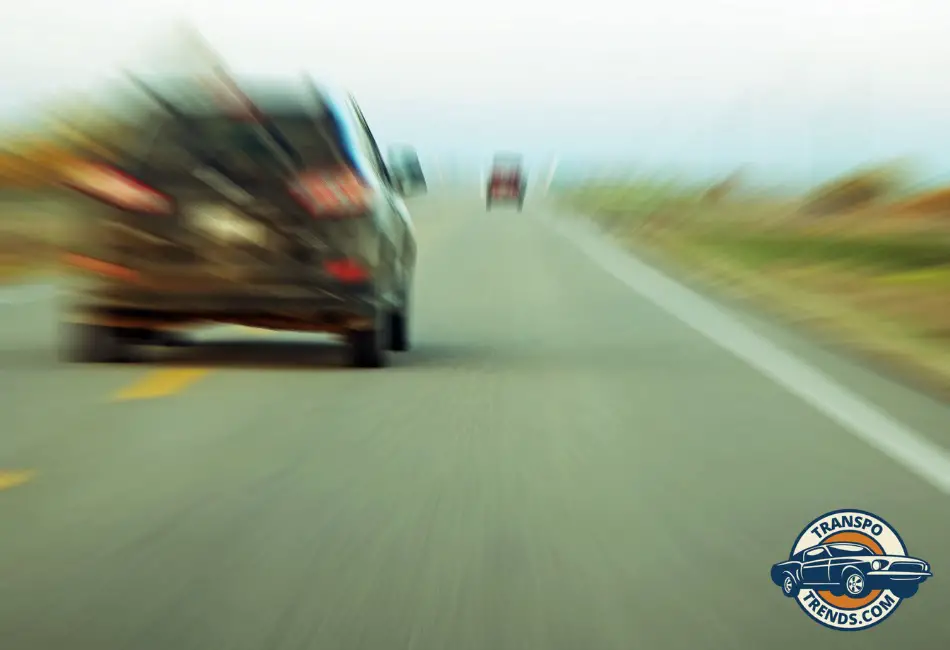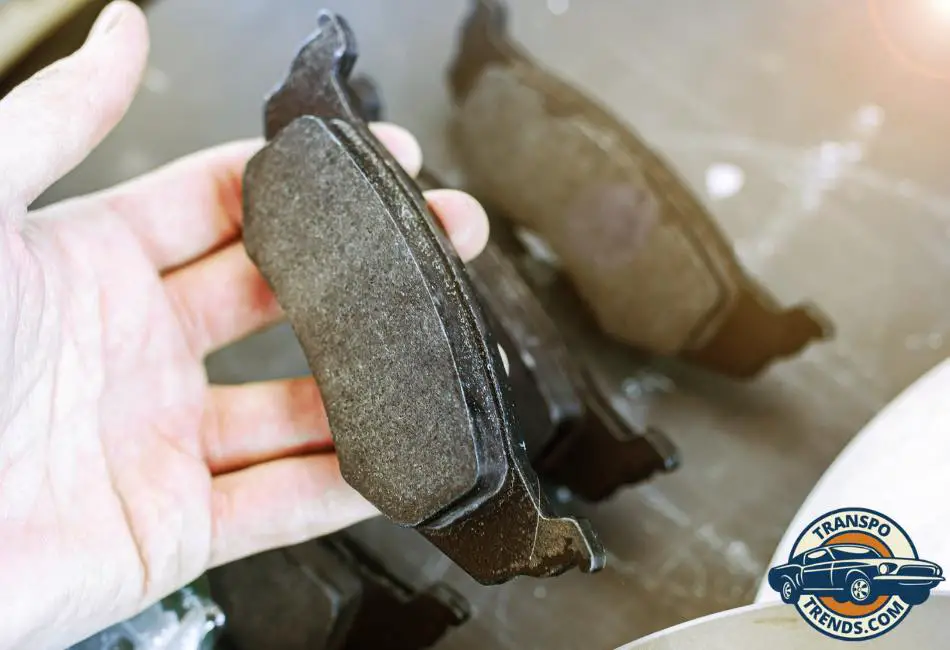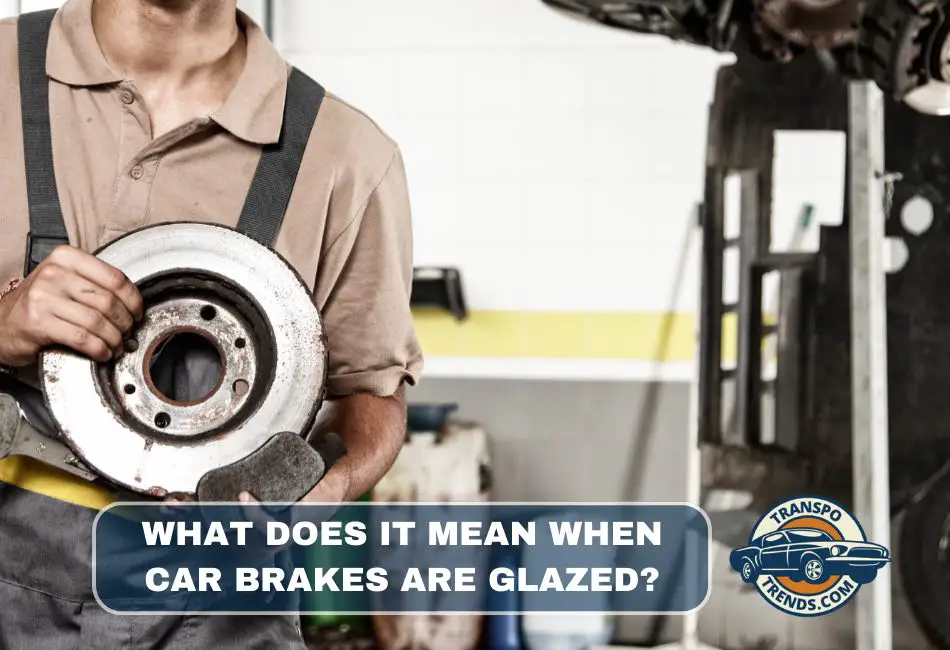For those unfamiliar, brake glazing is a common issue that refers to the shiny, glass-like appearance on the surface of brake pads or brake rotors resulting from excessive heat.
Efficient brakes are critical to safe driving, and understanding the nuances of brake health can help prevent accidents and costly repairs.
In this blog, we’ll dive into the details of brake glazing: what it means, common signs to look out for, and, of course, solutions to this problem.
By the end, you’ll understand brake glazing and how to deal effectively. Let’s get started.
Understanding Brake Glazing
From my experience, brake glazing typically gives the brake pads or rotors a shiny, glass-like look. I remember first noticing this peculiar glow on my vehicle’s brakes.
I was unsure what it was, but I knew something was off. As I learned, the shiny appearance is caused by the brake pad material crystallizing or hardening due to excessive heat.
Factors Contributing to Brake Glazing

Several factors contribute to brake glazing, among them heat and friction. Heavy braking from high speeds or a heavy load can cause the same issue.
Visual Signs of Glazed Brakes
Visual signs of glazed brakes are usually the first indication that something might be wrong. The most noticeable sign is the shiny, glass-like appearance.
You might also notice reduced effectiveness when braking; the vehicle doesn’t slow as quickly or as smoothly as it should.
These signs are a cue to take action and address the problem before it becomes more serious.
Meaning 1: Reduced Stopping Power
Brake glazing doesn’t just affect the look of your brake pads; its implications are far more serious, and one of those is reduced stopping power.
How glazed brakes affect stopping distances
When the brake pads harden due to glazing, they don’t grip the rotor as effectively. This was precisely what I experienced during my mountain trip.
I had to press harder on the brake pedal to achieve the same stopping power, and even then, my vehicle took a longer distance to come to a complete halt. It was a nerve-wracking experience.
Increased risk of accidents and collisions
As you can imagine, this increases the risk of accidents and collisions. I was lucky that the roads were not busy that day.
However, longer stopping distances in traffic can mean the difference between a close call and a costly collision, not to mention the potential for injury.
Addressing reduced stopping power promptly
This underscores the importance of addressing the issue promptly. Ignoring the signs of brake glazing can compromise safety on the road.
Meaning 2: Increased Noise and Vibration
Another symptom of brake glazing I’ve experienced firsthand is increased noise and vibration.
Causes of increased noise in glazed brakes
When you apply the brakes, glazed brakes often make a screeching or squealing noise.
This is due to the hardened, glass-like surface of the brake pads rubbing against the rotors. It can be quite unnerving, especially when you’re not expecting it.
Vibrations as indicators of glazed brake issues
In addition to the noise, you might also feel vibrations when applying the brakes.
I remember feeling a shudder running through my vehicle whenever I braked during my mountain trip. That was the moment I realized something was seriously wrong.
Impact on driving comfort and safety
These symptoms, while unpleasant, serve as important indicators of a potential problem. Beyond the impact on driving comfort, they’re also signs of a safety issue that needs to be addressed.
I’ve learned to pay attention to these signs and take immediate action, ensuring my vehicle is always safe and in top condition.
Meaning 3: Accelerated Brake Wear
How glazing accelerates brake pad and rotor wear
From my experience, brake glazing is more than just a nuisance—it’s a grind.
The hardened surface of glazed brakes rubs against the brake rotors, wearing them down faster.
It’s like rubbing sandpaper against wood, except your precious vehicle is being worn down in this case.

Implications for car maintenance
The accelerated wear and tear caused by glazed brakes can have significant economic implications.
More frequent brake replacements equate to more expenses. It was a hard lesson I had to learn—I ended up shelling out for an unexpected brake replacement, all because I initially ignored the high-pitched squeals from my brakes.
Importance of regular brake inspections
From that experience, I’ve learned the importance of regular brake inspections. Even if your brakes seem fine, it’s worth having them checked out to catch early signs of glazing.
Regular inspections can help prevent glazing from escalating and costing you more in the long run.
Meaning 4: Overheating and Brake Fade
Relationship between glazing, heat, and brake fade
Heat plays a central role in the glazing process. Overheating brakes can lead to brake fade, which reduces stopping power.
Risks of overheated brakes
The risks associated with overheated brakes can’t be understated. Brake fade can make it more difficult to stop, compromising safety.
That downhill drive was a nerve-wracking experience. My vehicle wasn’t slowing down as usual—I could feel my heart racing.
Strategies to prevent brake overheating and fade
To prevent similar scares in the future, I’ve adopted a few strategies. One is to use engine braking when going downhill to reduce the burden on my brakes.
I also give my brakes time to cool down if I use them heavily. By taking these steps, we can all keep our brakes—and ourselves—safe on the road.
Meaning 5: Impact on Fuel Efficiency
How glazed brakes contribute to increased fuel consumption
In my experience, glazed brakes can also affect your vehicle’s fuel efficiency.
When brakes are glazed, they can often stick and generate more friction, causing your vehicle to work harder to maintain speed.
My car guzzled more fuel than usual, indicating something was off in my brake system.
The economic repercussions of this are noticeable; my visits to the fuel station became more frequent, and the bills got heftier.
But beyond the personal cost, the environmental impact of increased fuel consumption also concerned me.
Extra fuel usage means more carbon emissions, contributing to air pollution and climate change.
Addressing glazed brakes for improved fuel efficiency
Addressing brake glazing promptly improved my car’s fuel efficiency considerably.
It was surprising how such a minor maintenance task could substantially affect my vehicle’s performance and wallet!
Prevention and Solutions
Regular brake maintenance practices
After these experiences, regular brake maintenance became a habit of mine. I started scheduling regular inspections, paying attention to unusual noises, and ensuring my brakes were cleaned regularly.
Choosing the right brake pads to minimize glazing
Choosing the right brake pads was another lesson I learned. Some pads are more heat-resistant and less likely to glaze over time.
I researched and talked to professionals before choosing the right type for my vehicle.
Professional assistance for brake inspection and repair
I can’t emphasize the importance of professional help enough when it comes to brake inspection and repair.
Mechanics have the knowledge and tools to diagnose and fix problems that may not be noticeable to the untrained eye. It’s an investment in your safety and your vehicle’s longevity.
Conclusion
Glazed brakes have several meanings and implications, from squeaking and squealing to brake fade and even lowered fuel efficiency.
Regular brake maintenance, choosing the right brake pads, and seeking professional assistance can prevent brake glazing and its consequences.
I urge all drivers to address brake glazing promptly. It ensures safer driving and contributes to a healthier environment and a healthier wallet!

